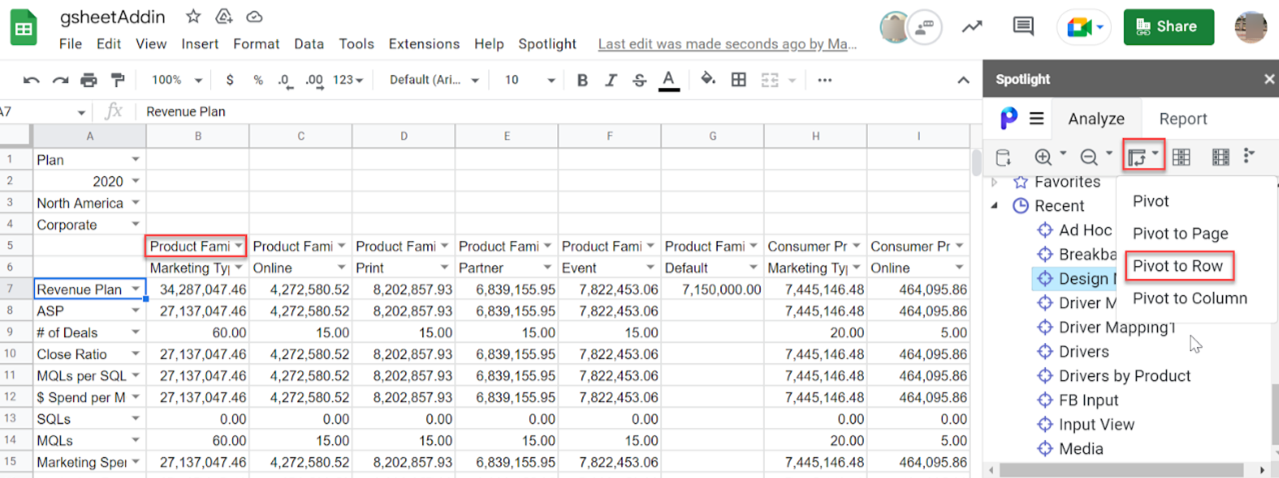- 1 Minute to read
- Print
- DarkLight
- PDF
Pivot
- 1 Minute to read
- Print
- DarkLight
- PDF
The Pivot feature helps you to swap the dimensions between page, row, and column by defining the view as required.
In Practice: Pivot
- Click the Pivot icon and select Pivot.
.png)
- The column data is swapped to a row, and the row data is swapped to the column.
Before Pivot.png)
After Pivot.png)
Pivot to Page
Pivot dimensions to the page level help you to pivot a dimension from a row to a Page section or from a column to a Page section.
In Practice: Pivot to Page
- Select a dimension on a row or column and navigate to Pivot > Pivot to Page.
.png)
- The selected dimension is swapped to the page level.
.png)
Pivot to Row
With Pivot to Row, you can select a single dimension and pivot it from the column to the row or from page to row. Dimensions not selected remain on the column/page, respectively.
In Practice: Pivot to Row
- Select a dimension from the column, and navigate to Pivot > Pivot to Row.

- The selected dimension is swapped from column to row.
.png)
Pivot to Column
With Pivot to Column, you can select a single dimension and pivot it from a row to a column or from page to column. Dimensions not selected remain on the row/page, respectively.
In Practice: Pivot to Column
- Select a dimension on the row from the view, and navigate to Pivot > Pivot to Column.
.png)
- The selected dimension is swapped from row to column.
.png)

